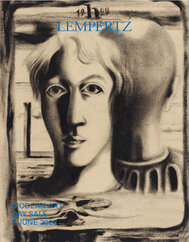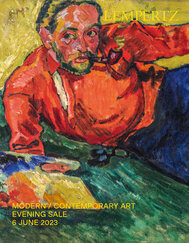Expressionism
What is suppressed eventually rebels: art history, rich in revolution, has seen many shake-ups over the centuries, but hardly any reached the intensity and impact of Expressionism which shook the clanking iron chains of the contemporary and often commercialised art world with such compelling force. This rebellion found its epochal climax where the severity of form in the shape of Wilhelminism and its omnipresent moral obligation was at its most oppressive: in Germany.
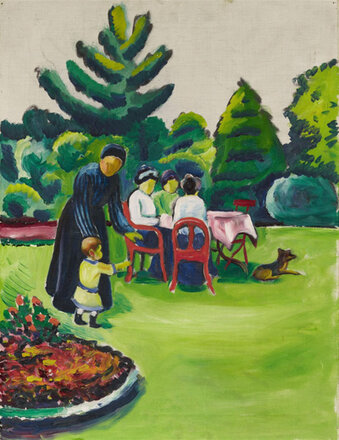
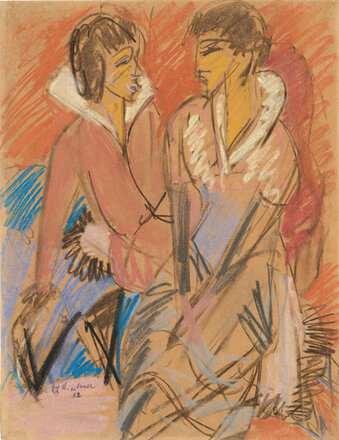
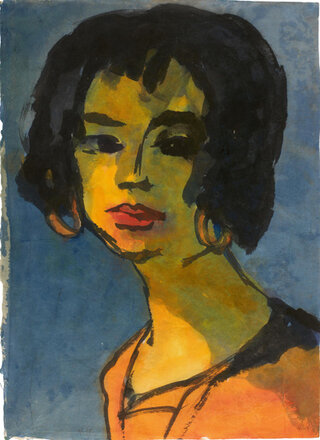
Expressionism - Table of contents
- Expressionism – A German epoch with a French name
- Die Brücke as the pioneer of Expressionism
- The Blaue Reiter as the pinnacle of Expressionism
- Characteristic features of Expressionism
- The Expressionist purification of the world in fire and smoke
- Expressionism lives on in the 21st century
- Artists of Expressionism
- Upcoming Auctions - Expressionism
- Our passed Expressionism-Auctions
- Expressionism Prices
- Sell Expressionism - Object evaluation & Consignment
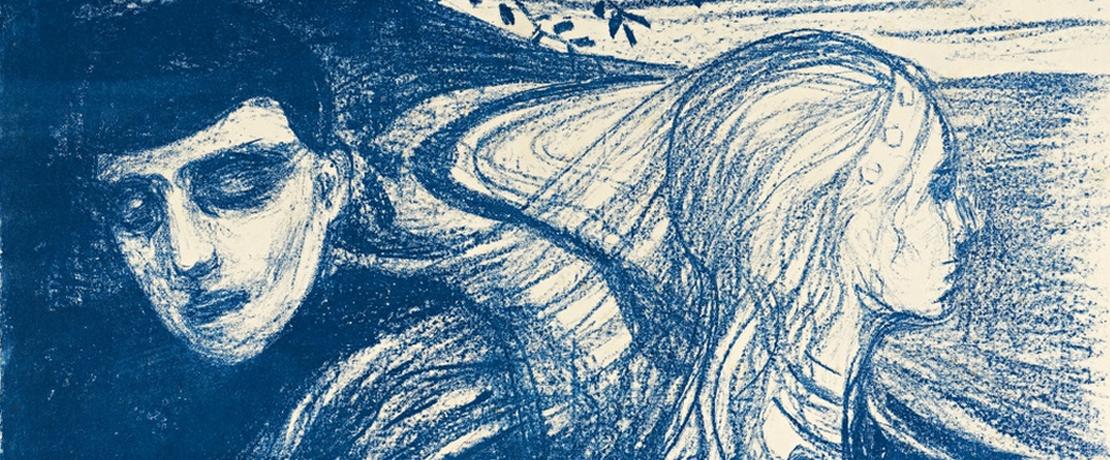
Expressionism – A German epoch with a French name
Although the revolution this time was German, the name stems from French: the expression indicates the emotional “expression” of art in contrast to the strict academically regulated naturalistic history painting; at the turn of the century, the entire European avant-garde was considered “expressionist”. The gallerist Herwarth Walden, who was innately dedicated to everything new in art, concretised the term Expressionism when he introduced the members of the artists’ association Der Blaue Reiter as “German Expressionists” at the “First German Autumn salon” in 1913. Whilst the term also temporarily included the French Fauves and Cubists, namely Pablo Picasso, as well as the Italian Futurists, the narrowing to German and a few Austrian artists gathered pace, not least through the book Der Expressionismus, published in 1914, whose author, the influential art critic Paul Fechter, restricted himself entirely to the Brücke and the Blaue Reiter. Both groups of avant-gardes were thereby named which, first and foremost, have given face and identity to Expressionism to this day. Regardless of German nationalisation, however, the important impulses of international painting must not be overlooked: Vincent van Gogh, Paul Gauguin, Paul Cézanne, Kees van Dongen, James Ensor or Edward Munch were formative role models.
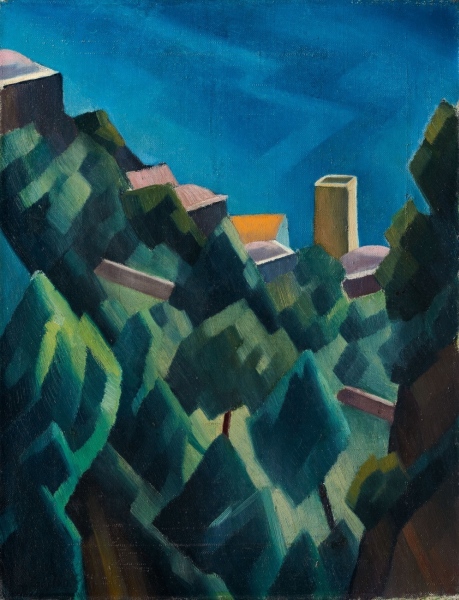
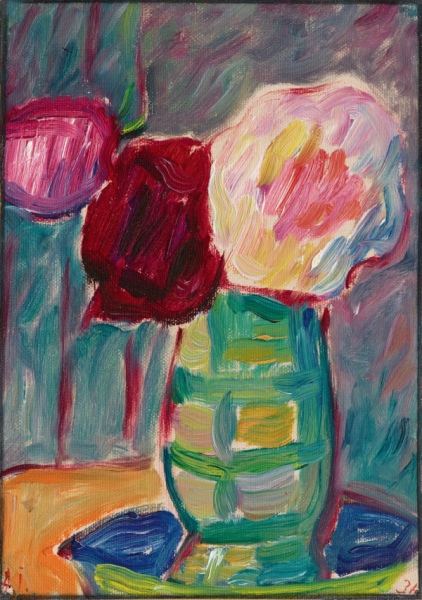
Die Brücke as the pioneer of Expressionism
The Brücke (bridge) over the gulf between the old and a new era of art was initially erected, fittingly, not by painting but by architecture. Despite the unifying name, it was a radical break with everything traditional, a fresh and free community that should be open to all artists who knew themselves to be committed solely to their creative impulse. Their founders and master builders were the Dresden architecture students Karl Schmidt-Rottluff, Erich Heckel and Ernst Ludwig Kirchner. The name was not to be a program, but rather to outline a vague departure, but there is also an echo of Friedrich Nietzsche and his talk of man as a bridge. In the search of new possibilities of expression, the group deliberately looked further afield to the equally primal and powerful language of form and colour of African and Polynesian art. Exaggeration and distortion characterised the group’s early work much more than realism and muted tones, with the woodcut as its chosen medium. Later, Emil Nolde, Otto Mueller and Max Pechstein also became notable members of the group. The move to Berlin in 1911 brought an increased dilution of the original community idea: the painters involved now strived for a personal style and their great patron, Walden, turned to abstraction. In 1913, Kirchner’s egocentric chronicle of the Brücke, in which he greatly exaggerated his own importance in the collective, caused the final rift.
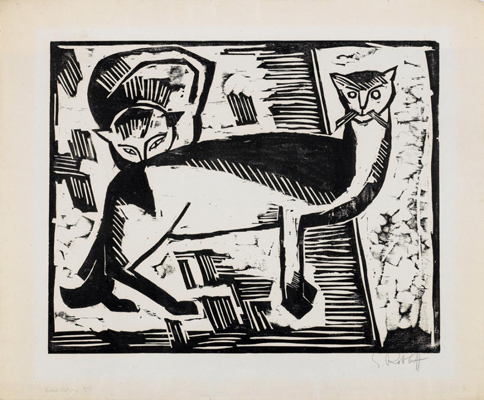
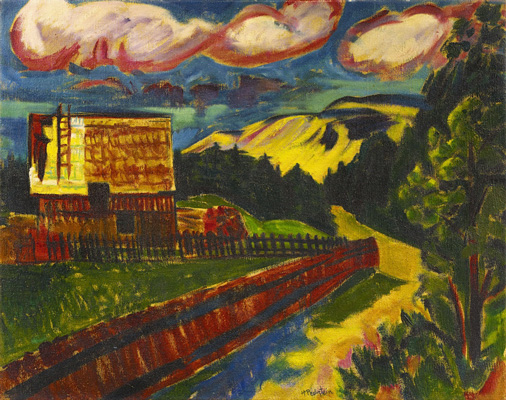
The Blaue Reiter as the pinnacle of Expressionism
Unlike the Brücke artists, the Blaue Reiter were not a tightly-knit group but a loose association that strove not for a uniform style but rather praised and encouraged independent artistic development. Whilst the foundation of the Blaue Reiter can be indisputably attributed to Wassily Kandinsky and Franz Marc - their mutual preference for the colour blue and the subject of horse and rider were the inspiration for the artist’s association and its famous agenda – it is much more difficult with the other members: August Macke, for example, often ascribed to the Blaue Reiter, took more of an outsider role and always went his own way. Karl Hofer is classed today as Expressionist, but he did not consider himself one. On the other hand, Gabriele Münter, Alexej von Jawlensky and Alfred Kubin can undoubtedly be counted among the Blaue Reiter, whilst Paul Klee, Heinrich Campendonk and the composer Arnold Schönberg featured occasionally in the group’s immediate circle. The loose association of various artists was united by the desire to break out of the traditional repertoire of painterly forms, to no longer orient art towards the outside, but towards the inside. The Blaue Reiter’s gallop, however, was short-lived: with the start of the First World War, only a few years after its foundation, the group disbanded.
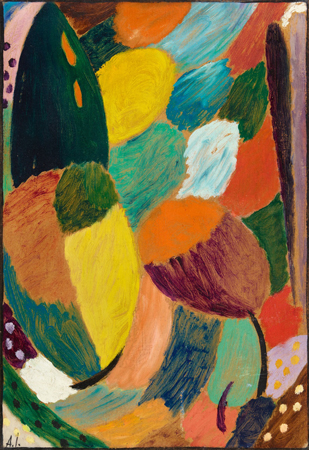
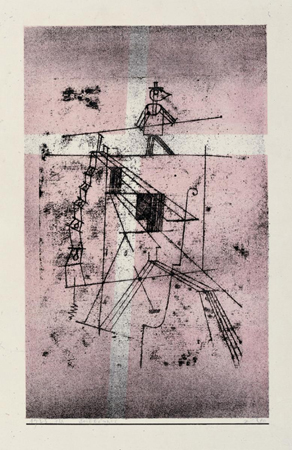
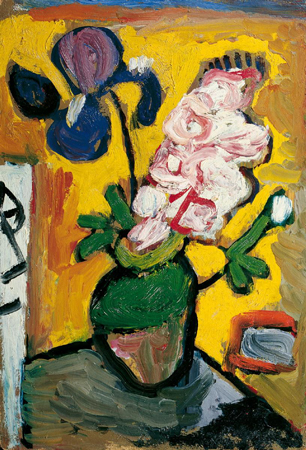
Characteristic features of Expressionism
Exaggeration and over-emphasis are the acknowledged lifeblood of Expressionist paining, yet it is still difficult within this framework to find uniform and, above all, distinctive characteristics. If the pictures of Expressionist artists are stood next to each other and compared, a single style would be barely recognisable. Accordingly, art history speaks less of an Expressionist style than – true to the original sense of the word – of an expressionistic expression. A great restlessness is inherent in Expressionist paintings that constantly pushes outwards, distorts shapes and surfaces, evokes contrasts, and culminates in nervously twitching peaks. In the depiction of figures, the painting sometimes takes on an almost caricatural form, landscapes become apocalyptic abysses though the breathless, almost hectic brushwork. Franz Marc’ painting Kämpfende Formen programmatically encapsulates the character of Expressionism – an inner struggle that pushes outwards, that feeds on the collision of irreconcilable differences, warmth against cold, light against darkness, life against death, dragging the viewer into the spiritual conflict of the ministering artist.
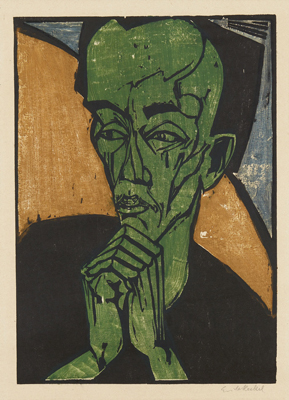
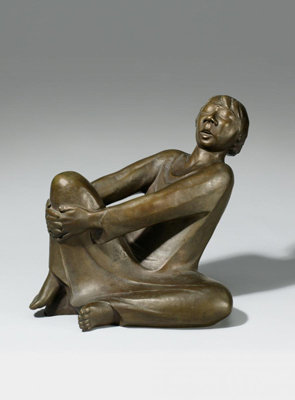
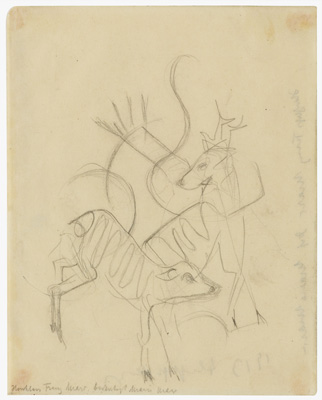
The Expressionist purification of the world in fire and smoke
In the 1920s, the smoke of the revolution had gradually cleared, the oppressed artist’s soul had made itself heard, the power of the colours waned, the raging sensual frenzy gradually faded to the sharply observed and precisely modelled New Objectivity. The incoming disillusionment was also a result of the enthusiasm for the war that led the young artists by the dozen to their death or trauma: the followers of the Blaue Reiter, in particular, rose in an exaggerated expectation of salvation, in a need to purify the old world and also to subject art to a cleansing fire, so that the approaching First World War stood for them not as a horror, but as an opportunity. Important painters such as Ernst Barlach, Karl Schmidt-Rottluff and Lovis Corinth fell into the general war euphoria. Many, such as Oskar Kokoschka, Max Beckmann or Otto Dix, voluntarily signed up to the military, whilst some, such as Franz Marc, Wilhelm Morgner and August Macke, fell on the battlefield, and others, including Ernst Ludwig Kirchner, returned home traumatised and broken. In a way, the old portent applies also to Expressionism: the revolution eats its children.
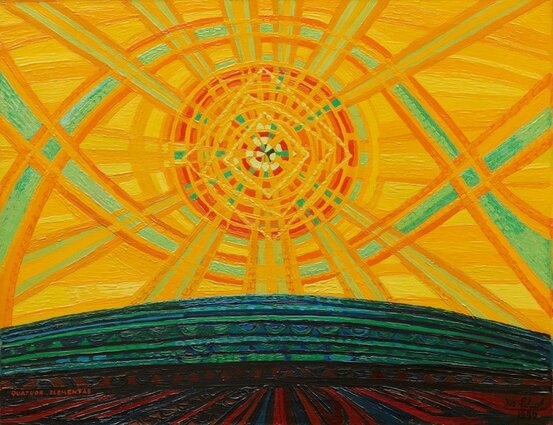
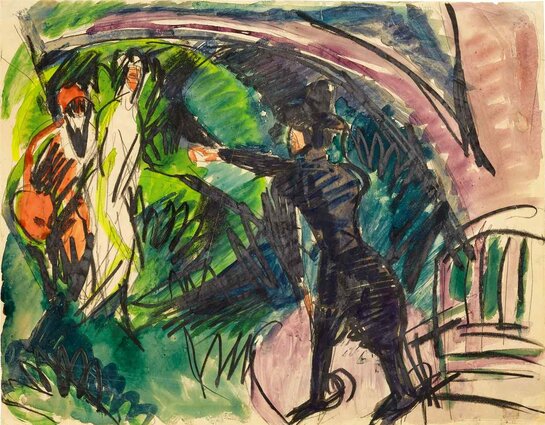
Expressionism lives on in the 21st century
The history of Expressionism does not end there though. In fact, it was first with modern art criticism that the unheard-of paradigm shift which accompanied the expressionist groupings was fully explored. Pictures by the Expressionist masters are regularly the subject of acclaimed and contested auctions. Mädchen in Südwester, in which Ernst Ludwig Kirchner charmingly immortalised his muse and future wife Erna Schilling in front of a coastal landscape with a lighthouse, sold for more than 1.5 million euro at Lempertz in December 2016. Further gems of Expressionist painting include Der Jäger by Emil Nolde and Häuser im Schnee, again from Ernst Ludwig Kirchner. The great themes of Expressionist art, the oversaturated, oppressive city, the longing for a paradisical-idealised life in nature and the desire for a radical renewal of the world, have gained relevance rather than lost – and Lempertz auction house has the necessary expertise to present the artistic treatment of these important motifs appropriately.
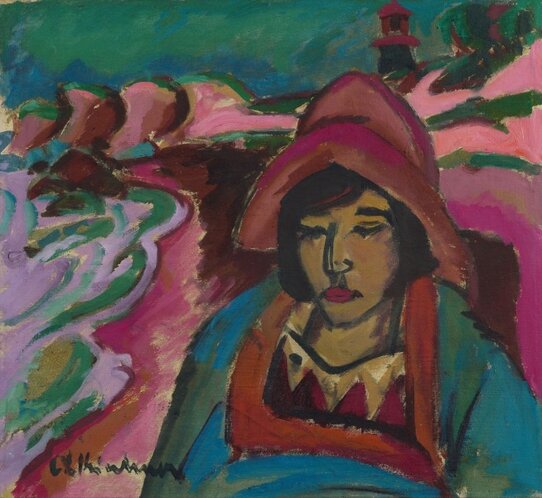
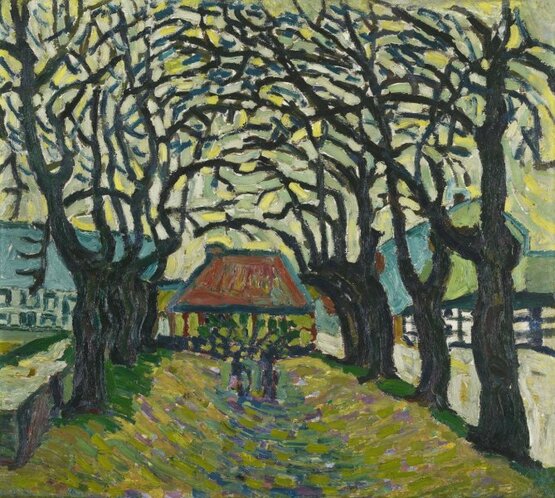
Artists of Expressionism
- Ernst Ludwig Kirchner (1880–1938)
- Emil Nolde (1867–1956)
- Erich Heckel (1883–1970)
- Max Beckmann (1884–1950)
- Käthe Kollwitz (1867–1945)
- August Macke (1887–1914)
- Franz Marc (1880–1916)
- Lyonel Feininger (1871–1956)
- Gabriele Münter (1877–1962)
- Egon Schiele (1890–1918)
- Oskar Kokoschka (1886–1980)
- Wassily Kandinsky (1866–1944)
- Karl Schmidt-Rottluff (1884–1976)
- Max Pechstein (1881–1955)
- Karl Hofer (1878–1955)
- Conrad Felixmüller (1897–1977)
- Otto Dix (1891–1969)
Upcoming Auctions - Expressionism
Auction 1224 - Day Sale - Modern Art
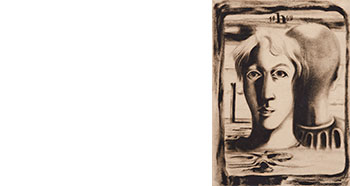
Auction
Wednesday, June 7
11 am: Lot 100 – 275
Preview
Thursday/Friday, 1/2 June, 10 am - 5.30 pm
Saturday, June 3, 10 am - 4 pm
Sunday, June 4, 11 a.m. - 4 p.m.
Monday, June 5, 10 a.m. - 5.30 p.m.
Vernissage
Wednesday, May 31, 6 pm
Berlin, Poststr. 22 (a selection)
Tuesday, May 23, 10 am - 9 pm
Wednesday, 24 May 10 am - 5 pm
Vernissage
Tuesday, May 23, 6 pm
Auction 1223 - Evening Sale - Modern Art
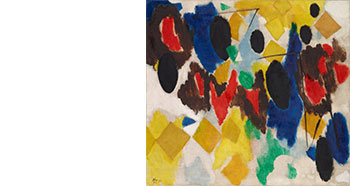
Auction
Tuesday, June 6
6 pm: Lot 1 – 97
Preview
Thursday/Friday, 1/2 June, 10 am - 5.30 pm
Saturday, June 3, 10 am - 4 pm
Sunday, June 4, 11 a.m. - 4 p.m.
Monday, June 5, 10 a.m. - 5.30 p.m.
Vernissage
Wednesday, May 31, 6 pm
Berlin, Poststr. 22 (a selection)
Tuesday, May 23, 10 am - 9 pm
Wednesday, 24 May 10 am - 5 pm
Vernissage
Tuesday, May 23, 6 pm
Our passed Expressionism-Auctions
- Auction 1212 - Day Sale - Modern Art
- Auction 1211 - Evening Sale - Modern Art and Contemporary Art
- Auction 1201 - Day Sale - Modern Art
- Auction 1200 - Evening Sale - Modern Art and Contemporary Art
- Auction 1188 - Day Sale - Modern Art
- Auction 1187 - Evening Sale - Modern and Contemporary Art
- Auction 1178 - Day Sale - Modern and Contemporary Art
Expressionism Prices
A few examples of expressionism prices auctioned in Lempertz auctions:
| Expressionism | Auction - Lot Nr. | Object | Price |
|---|---|---|---|
| Expressionism | Auction 1078 - Lot 210 | Ernst Ludwig Kirchner - Mädchen in Südwester | 1.576.000 € |
| Expressionism | Auction 891 - Lot 872 | Emil Nolde - Marschhof | 1.368.500 € |
| Expressionism | Auction 990 - Lot 230 | Max Beckmann - Löwenbändiger (Zirkus) | 871.200 € |
| Expressionism | Auction 847 - Lot 968 | Egon Schiele - Zwei Frauen | 797.300 € |
| Expressionism | Auction 1187 - Lot 194 | Ernst Ludwig Kirchner - Stilleben mit zwei Holzfiguren und Blumen | 714.000 € |
| Expressionism | Auction 1090 - Lot 260 | August Macke - Kaffeetafel im Garten | 592.000 € |
| Expressionism | Auction 867 - Lot 1065 | Wassily Kandinsky - Kornhausten (Murnau, Herbst) | 499.800 € |
| Expressionism | Auction 997 - Lot 205 | Paula Modersohn-Becker - Sitzendes Kind an einer Birke (Kind mit Frucht) | 390.400 € |
| Expressionism | Auction 923 - Lot 216 | Emil Nolde - Abendlandschaft mit Mühle | 384.000 € |
| Expressionism | Auction 882 - Lot 798 | Oskar Kokoschka - Evelyn (Threnody) | 297.500 € |
| Expressionism | Auction 962 - Lot 585 | Karl Schmidt-Rottluff - Landschaft mit Karren | 150.000 € |
Sell Expressionism - Object evaluation & Consignment
Do you own a work by a Expressionism artist and would like to sell it?
Have your work of art valued without obligation and free of charge.
Our experts will contact you with their assessment of your works/works of art as soon as possible.

